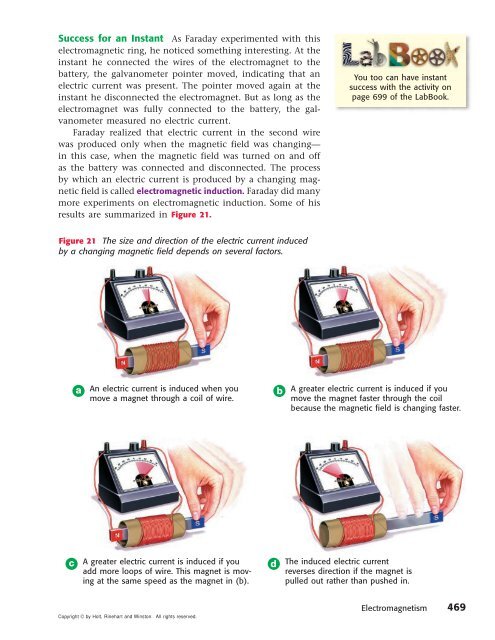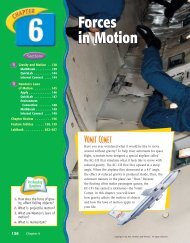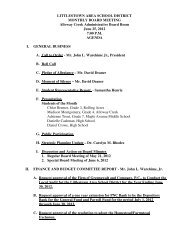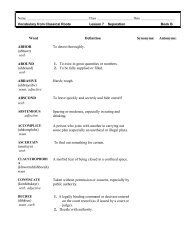Electromagnetism Electromagnetism
Electromagnetism Electromagnetism
Electromagnetism Electromagnetism
You also want an ePaper? Increase the reach of your titles
YUMPU automatically turns print PDFs into web optimized ePapers that Google loves.
Success for an Instant As Faraday experimented with this<br />
electromagnetic ring, he noticed something interesting. At the<br />
instant he connected the wires of the electromagnet to the<br />
battery, the galvanometer pointer moved, indicating that an<br />
electric current was present. The pointer moved again at the<br />
instant he disconnected the electromagnet. But as long as the<br />
electromagnet was fully connected to the battery, the galvanometer<br />
measured no electric current.<br />
Faraday realized that electric current in the second wire<br />
was produced only when the magnetic field was changing—<br />
in this case, when the magnetic field was turned on and off<br />
as the battery was connected and disconnected. The process<br />
by which an electric current is produced by a changing magnetic<br />
field is called electromagnetic induction. Faraday did many<br />
more experiments on electromagnetic induction. Some of his<br />
results are summarized in Figure 21.<br />
Figure 21 The size and direction of the electric current induced<br />
by a changing magnetic field depends on several factors.<br />
a An electric current is induced when you b<br />
move a magnet through a coil of wire.<br />
c A greater electric current is induced if you<br />
add more loops of wire. This magnet is moving<br />
at the same speed as the magnet in (b).<br />
d<br />
Copyright © by Holt, Rinehart and Winston. All rights reserved.<br />
You too can have instant<br />
success with the activity on<br />
page 699 of the LabBook.<br />
A greater electric current is induced if you<br />
move the magnet faster through the coil<br />
because the magnetic field is changing faster.<br />
The induced electric current<br />
reverses direction if the magnet is<br />
pulled out rather than pushed in.<br />
<strong>Electromagnetism</strong> 469





